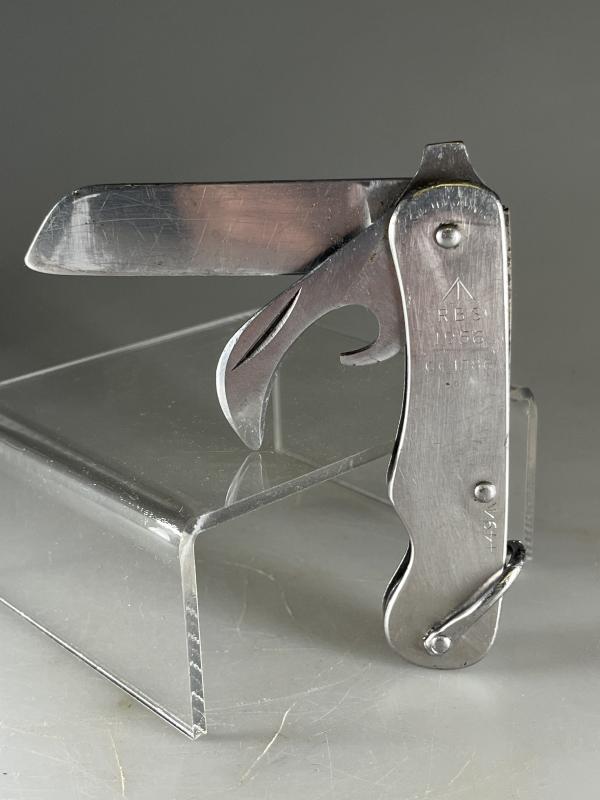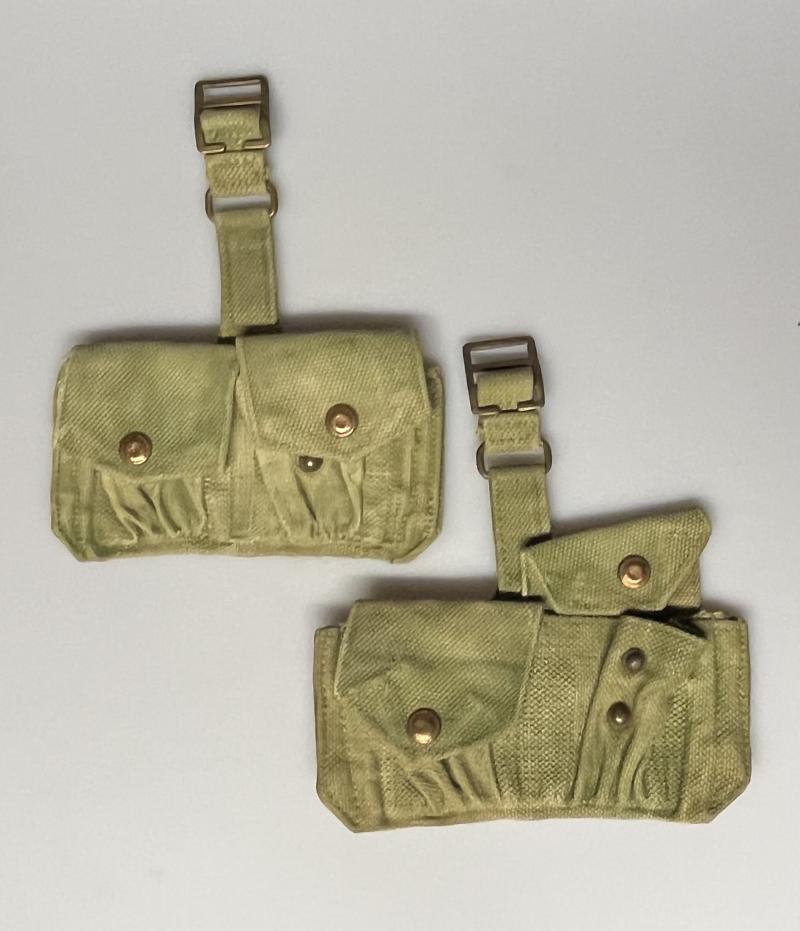WW2 Period, British, Cigarette Packet Pairing.
Was £20 now £15
Two of the most popular WW2 period cigarette packet brands in very good condition:
Wills ‘Woodbines’, packet of 10 (empty).
Players ‘Weights’, packet of 10 (empty).
In addition to tea, cigarettes were one of the most important comfort items available to troops. As well as commercially available items, usually purchased ... read more
WW2 Era Cake/Puck of KG103 Khaki Green (Light) Blanco.
Was £40 now £30
Blanco was used to clean and waterproof webbing in the sense that it covered stains and gave the webbing a consistent appearance. First the dirt needed to be brushed off then an even coating of the wet Blanco could be applied with a sponge or small brush, common practice was to use an old tooth or shaving brush. Once dry it could be lightly brushed to remove any e... read more
WW2/Post War Era Tin of ‘No. 103 Khaki Green (Light) Blanco.
Was £35 now £25
Blanco was used to clean and waterproof webbing in the sense that it covered stains and gave the webbing a consistent appearance. First the dirt needed to be brushed off then an even coating of the wet Blanco could be applied with a sponge or small brush, common practice was to use an old tooth or shaving brush. Once dry it could be lightly brushed to remove any e... read more
25.00 GBP
Post War Era Tin Khaki Blanco.
Was £35 now £25
Blanco was used to clean and waterproof webbing in the sense that it covered stains and gave the webbing a consistent appearance. First the dirt needed to be brushed off then an even coating of the wet Blanco could be applied with a sponge or small brush, common practice was to use an old tooth or shaving brush. Once dry it could be lightly brushed to remove any e... read more
WW2 Era Cake/Puck of KG103 Khaki Green (Light) Blanco.
Was £35 now £30
Blanco was used to clean and waterproof webbing in the sense that it covered stains and gave the webbing a consistent appearance. First the dirt needed to be brushed off then an even coating of the wet Blanco could be applied with a sponge or small brush, common practice was to use an old tooth or shaving brush. Once dry it could be lightly brushed to remove any e... read more
WW2 Commonwealth, 1937 Pattern Webbing Anklets, 1941.
Was £75 now £60
Anklets, also known as Gaiters, were issued as a left and right pair and replaced the puttees worn in WW1. They were manufactured in four sizes; 1 to 4, with 4 being the largest, one additional inch was added for each increase in the sized number, the height remained the same for all sizes. Throughout the war all anklets had a pair of brass buckles, later replaced... read more
Post WW2, British, National Service Clasp Knife.
Was £40 now £30
18+
NOTE:
Only to be sold to those over 18 years of age, verification will be needed, e.g., photo of drivi
ng licence or passport, before any sale is concluded.
The full range of clasp knives, colloquially known as Jack or Pen knives, that were issued to British and Commonwealth forces can vary from manufacturer to manufacturer,... read more
30.00 GBP
WW2, British, Clasp Knife.
Was £35 now £30
18+
NOTE:
Only to be sold to those over 18 years of age, verification will be needed, e.g., photo of driving licence or passport, before any sale is concluded.
The full range of clasp knives, colloquially known as Jack or Pen knives, that were issued to British and Commonwealth forces can vary from manufacturer to manufacturer, however... read more
30.00 GBP
WW2 British, 1937 Pattern Webbing Cartridge Carriers, Dunkirk Era.
Was £45 now £35
When issued the Cartridge Carriers were worn in pairs to replace the Basic Pouches. Each of the carriers consisted of two pockets, covered by a flap that was held by a brass snap that could be fixed in x2 positions. Each pocket could hold x2 .303 rifle stripper clips of 5 rounds per clip, 20 rounds per carrier and 40 rounds in total for the pair.
A one-inch... read more
WW2 British, 1937 Pattern Webbing Mk. III, Basic Pouches.
Was £75 now £60
The Basic Pouches were usually worn as a pair on the chest and were interchangeable. Rectangular in shape they have a hinged lid held by a brass ‘snap’, have a pair of brass buckles to the rear to allow fixing to the Web Equipment Braces and a set of double hooks for fixing to the Web Waist Belt.
At least three different Mk’s. exist, the difference between ... read more
60.00 GBP











